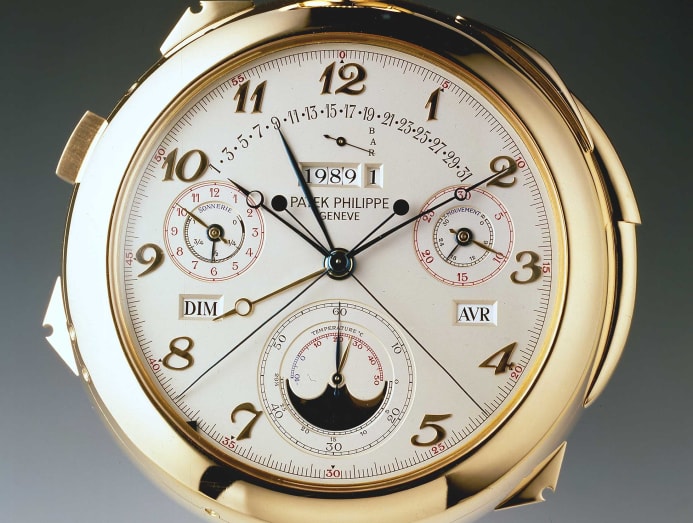A planetarium on the wrist: What's the point of pointless watch complications?
Astronomical complications can get abstruse fast. But those who persevere in understanding them will be rewarded with an ultra-rare timepiece that, well, holds the secrets of the universe.
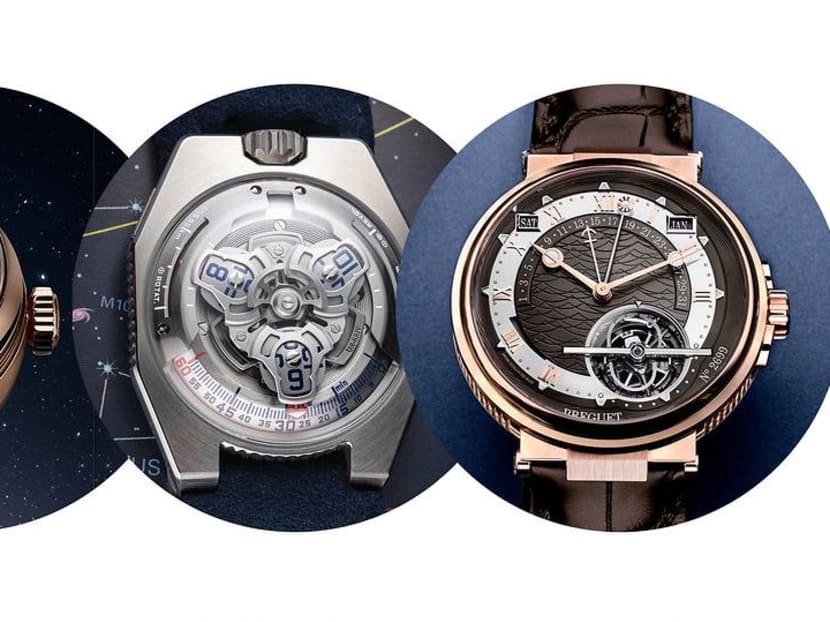
The breathtaking Jaeger-LeCoultre Master Grande Tradition Tourbillon Celeste, which features a sidereal annual calendar, indicated by a chapter ring and rotating disc that completes one rotation each sidereal day. (Photo: Jaeger-LeCoultre)
Urwerk watches look like they should be going on a trek to wayward stars in galaxies far, far away. But they’re very much earthbound, created by two madcap Swiss horologers who sit in a workshop in Geneva designing and building some of the industry’s most futuristic timepieces.
On the surface, it’s easy to see the otherworldly association thanks to its signature satellite hours, unique case shapes and often fluorescent accents. But the brand’s newest series, the UR-100 released just last year, features another nod to science by including two indicators that track the distances travelled as the Earth rotates on its axis as well as its journey around the sun. Useful, isn’t it?
READ> Urwerk to auction Star Wars-inspired UR-100 timepiece for COVID-19 relief
Of course not. Hardly any complications featured in modern wristwatches are. Chronographs, calendars, alarms and GMTs are already the most functional of horology’s little “extras” and even they can be easily replaced by modern gadgets. So why do “useless” ones exist?
One can argue that the less useful these complications are, the more poetic they become. It’s not about what these functions can do, but about how they can be done at all – and with nothing but traditional methods, imagination and a lot of intricate, backbreaking work.
If pointlessness adds to the poetry, then here are the most esoteric additions watchmakers have reached for.
READ> Which watchmaker doesn’t care whether you can tell the time or not?
EARTH’S COMMUTE
2019’s UR-100 SpaceTime was the first in a series of watches Urwerk created to be a relatively affordable introduction to the brand’s complex machines. The collection was joined in 2020 by the UR-100V Iron in steel and titanium, but the technical details remain the same.
Each of the red-tipped hour hands take turns to travel along the 60-minute scale at the bottom of the watch. In other models, the hand will simply retreat beneath the dial until its next turn.
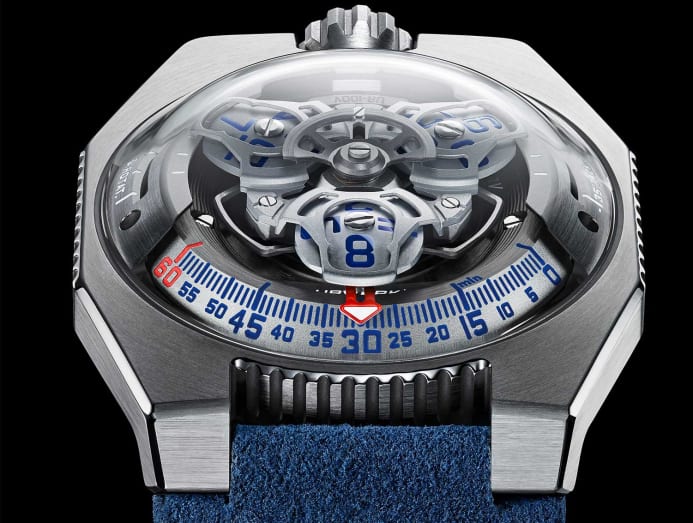
But the UR-100 watches have two additional indicators on either side of the watch for the “off-duty” hands: On the left is a 20-minute scale that tracks 555km (the distance Earth rotates in 20 minutes) and on the right at 2 o’clock is another 20-minute scale for 35,740km (how far the Earth travels on its orbit in the same amount of time).
Since these indications rely on the original satellite hour mechanism they don’t really qualify as an additional complication, but it’s a neat bit of trivia to share at parties, Zoom or otherwise.
EQUATION OF TIME
True or apparent solar time is based on the motion of the sun, so a true solar day measures the interval between two successive returns of the sun to a local meridian (the length of two true noons).
Inconveniently, we can’t use this as a unit of time because the earth travels in a non-perfect orbit. As a result, we use a mean solar day instead, which averages all the solar days in the year to give us 24-hour days. The difference between the true and mean time is known as the equation of time.
Its application is largely limited to the fields of astronomy, navigation, mathematics and solar-powered machines, but it has, on occasion, showed up in modern timepieces.
Watches with an equation of time usually have a small scale that’s graduated from -16 to +14 minutes, which tells the wearer how many minutes to add or subtract to get the true solar time. Panerai’s Luminor 1950 Equation of Time 8 Days GMT is a straightforward example.
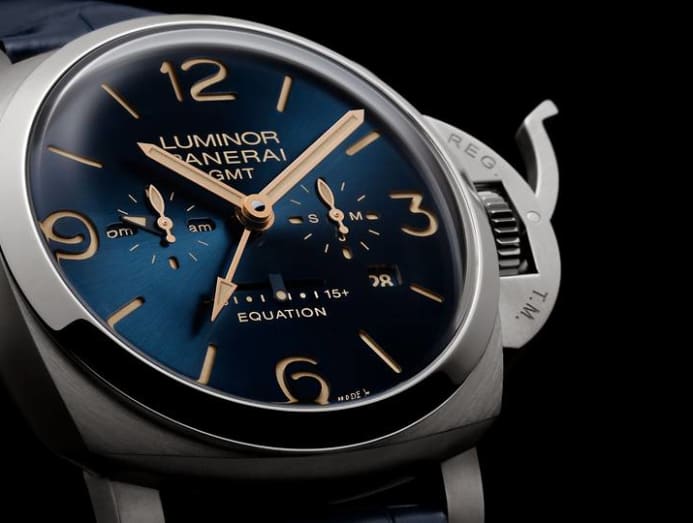
More complex are the ones that have built a running equation of time, where an additional minute hand can tell you in real time how much of the time you’re experiencing is actually a lie.
Not many watchmakers can or have bothered with this execution, which is what makes Breguet’s Marine Tourbillon Equation Marchante 5887 and Vacheron Constantin’s Les Cabinotiers Astronomical Grand Complication – Ode to Music all the more rare and impressive.
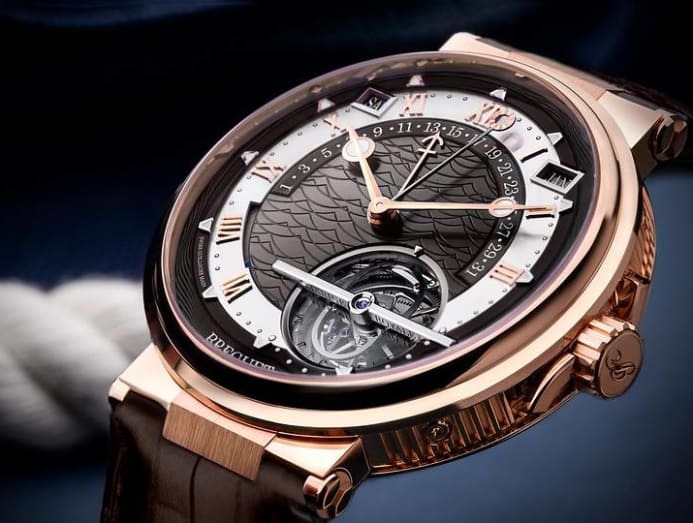
PLANETARIUM
Planetariums are supposed to be giant, often domed theatres in which images of celestial objects and other teaching or entertaining aids can be projected. To shrink one down to fit on the wrist is mind-boggling, but a handful of watchmakers have done it.
The executions are of course more conceptual, with most examples of planetarium watches showing the position of a few planets in a miniaturised and stylised solar system.
Probably the most famous of these is the Christiaan van der Klaauw Planetarium, which at 40mm wide, is the smallest mechanical planetarium in the world. Launched in 1999, the incredible watch shows the real-time orbits of Mercury, Venus, Earth, Mars, Jupiter and Saturn around the sun.
In 2020, the Dutch watchmaker announced 12 limited editions (six in steel, six in rose gold) inspired by the Royal Eise Eisinga Planetarium in the Netherlands, the oldest working orrery in the world.
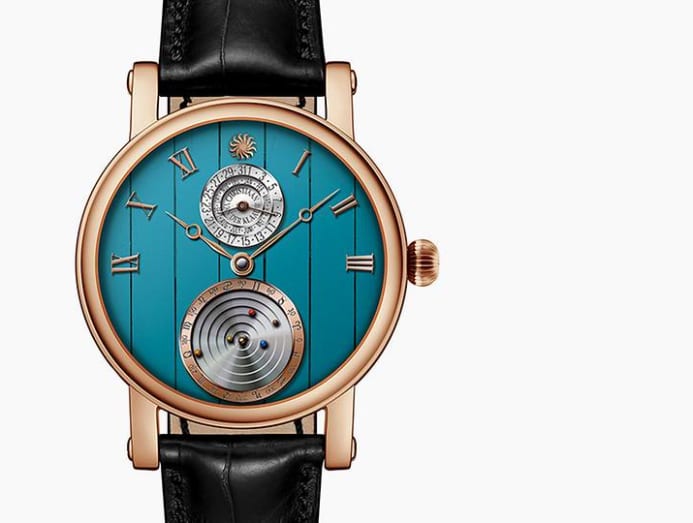
It was in fact Christiaan van der Klaauw who helped Van Cleef & Arpels develop a similar module for the latter’s Midnight Planetarium in 2014 and the smaller Lady Arpels Planetarium in 2018.
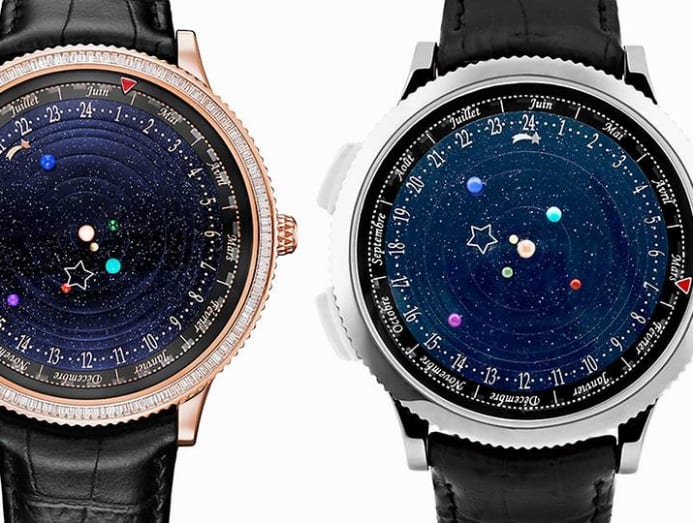
Using tiny spheres crafted out of gemstones to represent the planets is both indulgent and romantic (the Geo. Graham Orerry Tourbillon does this, too) but one of the earliest examples of a planetarium watch was much more austere and scientific in its approach. The Ulysse Nardin Planetarium Copernicus from 1988 looked more like an actual instrument than a wrist accessory, and showed the planetary positions for both a geocentric and heliocentric universe.
TIDE
Given its (presumed) usefulness to those who have any business on the sea, it’s easy to forget that the tide indicator is actually an astronomical complication, and a close cousin to the moon phase. When tide indicators show up at all, they are unsurprisingly found in sailing-themed watches.
Although regatta countdown timers are popular in such watches, the tide complication is fascinating if only for their rarity, so it was a pleasant surprise when IWC revealed the Portugieser Yacht Club Moon & Tide in 2020.
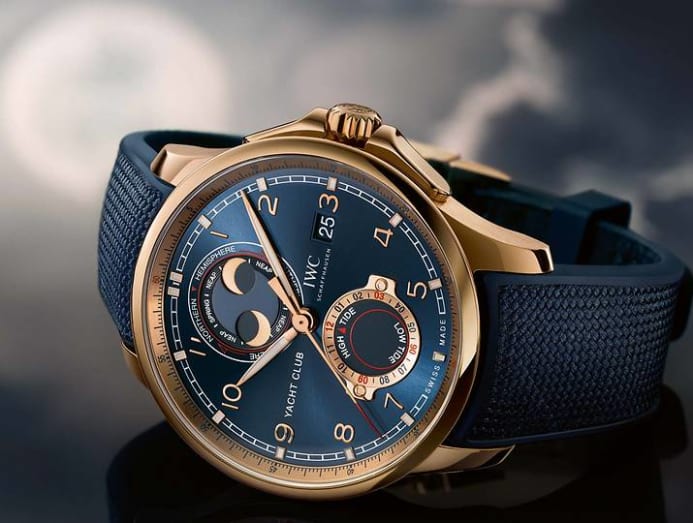
It’s quite large at 44.6mm, but that’s understandable given how it shows not only high and low tide, but also spring tide (characterised by very high tides during the new or full moon) and neap tide (a period of moderate tides), alongside a double moon phase.
The pairing of tide indicators with moon phases is rather common, as seen in examples like the Ulysse Nardin Marine Mega Yacht, Corum Admiral AC-One Tides and Christiaan van der Klaauw Real Moon Tides.
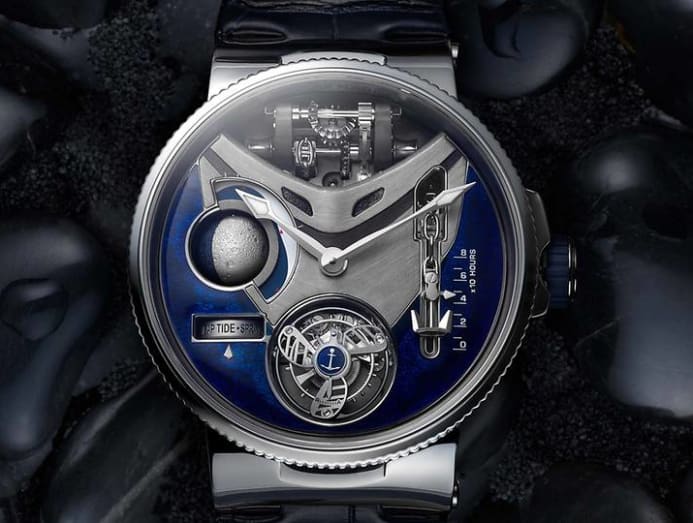
SIDEREAL TIME
We’ve covered what a solar day is, which is how long it takes for the Earth to complete one loop around the sun. And we know Earth is also spinning on its own axis while making that journey.
But because the entire planet is also moving, the sun will not appear in the same spot in the sky at the end of the rotation. To face the sun in the exact same position again, Earth has to rotate for another four minutes. So sidereal time is the actual time it takes Earth to complete one rotation: 23 hours 56 minutes and 4.1 seconds, and is useful for locating stars.
While modern equipment makes calculating this minuscule difference easy, it’s quite the opposite for little mechanical movements. It’s why watches with this complication are particularly infrequent and tend to be magnum opuses of their respective brands.
In Jaeger-LeCoultre’s case, the breathtaking Master Grande Tradition Tourbillon Celeste features a sidereal annual calendar, indicated by a chapter ring and rotating disc that completes one rotation each sidereal day.
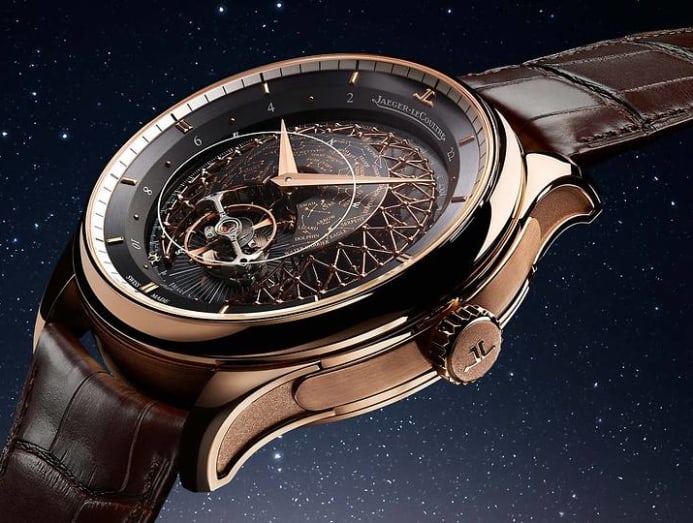
Other masterpieces like the IWC Portugieser Siderale Scafusia and Arnold & Son DBS dedicate a sub-dial to the sidereal time. But the award for biggest spectacle goes to the Jacob & Co Astronomia Sky.
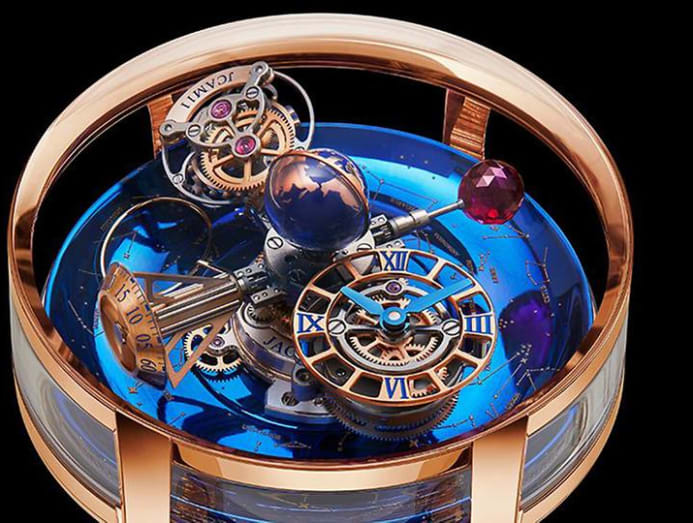
Within that beautiful mess you’ll find a small oval ring that orbits the dial once every sidereal day, and everything inside that ring is an accurate depiction of what you’ll find in the sky above us at that moment. The entire dial also makes one full rotation every sidereal year.
DATE OF EASTER
For everything horology has managed to achieve in terms of arcane astronomical indicators, there is still one that remains out of reach: The date of Easter. Ever since the introduction of the Gregorian calendar, Easter was decreed to fall on the first Sunday after the first full moon of the Spring Equinox. The irregularity of this annually moving date is virtually impossible to track mechanically.
A perpetual calendar, already among the greatest of watchmaking headaches, has to account for a leap year every four years. Even though it needs to be corrected again every 100 and 400 years, it’s still fairly predictable. But a full cycle of Easter dates only repeats once every 5,700,000 years.
The only watchmaker to have produced an Easter complication is Patek Philippe, and even that timepiece can only do so for a 28-year period. Still, the Calibre 89 is an extraordinary piece of horology and for many years after its completion in 1989 enjoyed the title of the world’s most complicated timepiece.
